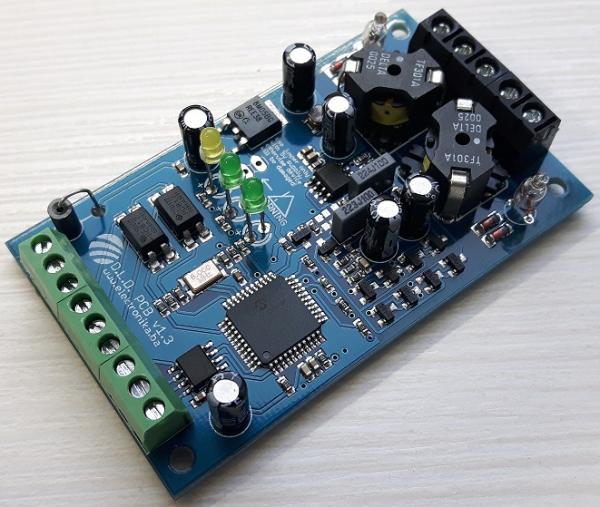Specifications
- Number of operating modes: 4
- Tuning: Automatic
- Detection type: Presence/Pulse
- Presence time: Adjustable in 3 steps
- Pulse duration: 250 ms / 500 ms
- Signal filtering: Adjustable in 2 steps (NORMAL, HIGH)
- Loop inductance: 20 uH – 1000 uH
- Frequency range: 20 kHz – 145 kHz
- Frequency selection: 2 combinations (LOW, HIGH)
- Sensitivity: Maximum 0.0025\% Δf/f, adjustable in 8 steps
- Detection speed: 10 ms by default, adjustable
- Start-up time: ~ 1 second per channel (or longer if frequency is not stable)
- Power supply: 12-40 V DC / 9-28 V AC (only for standalone version)
- Current consumption: ~ 0.035 A
- Temperature range: -35°C – 120°C
- Sensor protection: Galvanic isolation + gas discharge tube for lightning protection
- Dimensions: 8,5cm x 7cm
User Manuals and PC Configurator software source code
All user manuals are available for download in the ZIP archive (the red download button under the article). However, here is also a direct link for the user manual for PCB v1.2, FW v1 on this link (PDF), and for PCB v1.3, FW v1 here (PDF).
PC Configurator user manual is here (PDF) and source code is on GitHub here.
Modes of operation
- Single Channel (only A)
- Dual Channel Independent A & B
- Dual Channel Directional Logic A + B
- Speed Trap A + B
Hardware
Hardware differs from previous version in many ways but the essence is the same – it counts pulses coming into RA4/T0CKI pin and performs the same filtering and calculations in order to detect the change in frequency of oscillation. This time, it does that twice for both channels independently.
There were two possibilities on how to implement dual channel loop detector and one of them (and unfortunately widely used) is by using two independent oscillators on board while having them enabled/disabled one at a time in order to read loop A and loop B frequency. The other method is by multiplexing two (or more) loops on one single oscillator on board. I have chosen the second method because it just seams better to have one oscillator and two loops instead of two oscillators each connected to one loop.
It was quite tricky to enable/disable a loop in an oscillator so in the end I had to offset the multiplexer circuit to half of supply voltage (Vcc/2) and opted to use simple PNP transistors connected in parallel but in opposite direction so that one conducts positive half-wave and the other one negative half-wave of the oscillator signal. I first tried using CD4066 but with no luck.
Read More: projects/dual channel inductive loop vehicle detector

